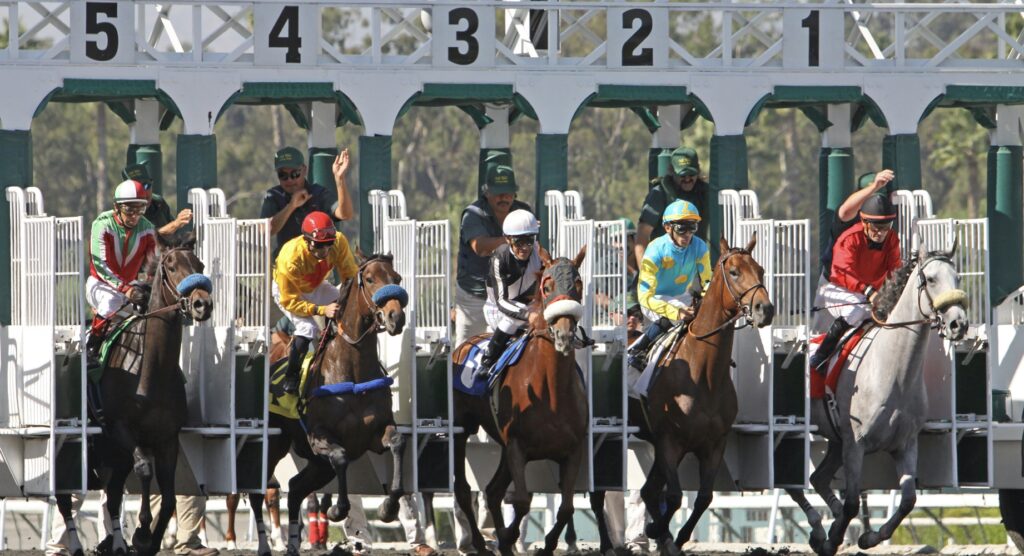Racehorse Trainer Idiosyncrasies
Racehorse trainers are a diverse bunch with differing levels of intelligence, gambling inclination and ability. Understanding trainer nuances and behaviours is one vital aspect of piecing together the complex puzzle that is a horse race. In this article we take a look at the various conditions and circumstances which produce a large discrepancy in trainer performance.
Profit From Trainer Trends
Betting is all about find value. That is finding a selection where you believe the percentage chance of success is higher than the figure reflected in the odds available. If you consistently receive 5.00 (20%) odds about a horse whose actual chance is more like 4.00 (25%), then long term profits will be obtained.
Identifying trainer trends can be a great way to find value opportunities and uncovering patterns and systems that are not yet in the public domain can prove fruitful.
Trainer’s Horse’s Off a Lay-Off
There used to be an old adage in horse racing that a horse couldn’t win off a long layoff. This remains true for some handlers, but others have a knack of producing their runners in optimal condition off an absence.
The table below shows the best and worst stables in terms of performance when bringing their horses back after being off the track for 120+ days:
| Trainer | Runners | Winners | Win S/R | Betfair Profit & Loss | A/E |
|---|---|---|---|---|---|
| Hughie Morrison | 508 | 80 | 15.75% | £219.34 | 1.38 |
| Luca Cumani | 498 | 97 | 19.48% | £88.91 | 1.28 |
| Emma Lavelle | 515 | 84 | 16.31% | £76.84 | 1.27 |
| Charlie Longsdon | 337 | 74 | 21.96 | £219.41 | 1.27 |
| Tim Easterby | 1172 | 48 | 4.10% | -£551.80 | 0.57 |
| Nick Littmoden | 329 | 11 | 3.34% | -£66.21 | 0.55 |
| Milton Bradly | 676 | 15 | 2.22% | -£211.69 | 0.53 |
| Tony Carroll | 619 | 14 | 2.26% | -£354.47 | 0.46 |
*The A/E figure represents that Actual number of winners / Expected number of winners based on odds. A figure of over 1.00 is positive and under 1.00 is negative.
There is a large discrepancy in the performance between some of the handlers. Very experienced trainers such as Tim Easterby and Nick Littmoden struggle to win with their runners on the back of a lay off.
Strikerates of 4.10% and 3.34% respectively are both well below the two handlers’ average of 9%, so it is worth avoiding these stable’s runners when returning from an absence. On the other side, trainers like Hughie Morrison and Luca Cumani are adept at bringing back their horses from a break.
Horses Turned Out Under A Penalty
When a horse wins a race, they will have their official mark reassessed by the handicapper at the BHA (British Horseracing Authority).
However, this process typically takes just over a week and often trainers want to run their horses again in the time in between. In this instance, horses are required to carry a 6lb penalty on the flat and a 7lb penalty over jumps.
Often, trainers believe the handicapper may increase the horse’s rating by more than the 6/7lb penalty and therefore want to run under favourable conditions. However, some trainers are more skilled at leaving a little in reserve when a horse has won than others.
Take Stuart Williams and Richard Guest for instance:
Stuart Williams runners under a 6lb penalty turned out within 7 days:
- 26/60 (43%) for £23 LSP. A/E 1.43
Richard Guest runners under a 6lb penalty turned out within 7 days:
- 1/51 (2%) for loss of £-49. A/E 0.12
The difference is huge. Runners from both stables had obviously won last time out and run very recently, so they should all be very competitive. However the trainers clearly have different agendas or levels of ability in keeping up the high levels of form.

Horses Returning Quickly Without Winning Last Time Out
An interesting angle is to look at the trainers that are not obliged to run their horses quickly as they did not win last time out. Again there is a wide spread in terms of performance:
| Trainer | Runners | Winners | Win S/R | Betfair Profit & Loss | A/E |
|---|---|---|---|---|---|
| Paul Green | 159 | 27 | 16.98% | 90.62 | 1.66 |
| Tracy Waggott | 195 | 29 | 14.87% | 163.95 | 1.62 |
| Dominic Ffrench Davis | 213 | 30 | 14.08% | 144.26 | 1.51 |
| Keith Dalgleish | 259 | 56 | 21.62% | 148.98 | 1.43 |
| John O’Shea | 232 | 18 | 7.76% | -£111.29 | 0.67 |
| Michael Quinn | 201 | 10 | 4.98% | -£100.05 | 0.64 |
| Zoe Davison | 173 | 6 | 3.47% | -£87.17 | 0.57 |
| Donal Nolan | 187 | 1 | 0.53% | -£176.50 | 0.35 |
The names at the bottom of the table are not really a surprise as they are among the less successful in the training ranks. However, those at the top wouldn’t necessarily be considered as the big and powerful stables.
Paul Green does much better with his 7 day returners who did not win LTO than in generally – a 16.98% strikerate compared to an overall rate of 8%. It is a similar story with Keith Dalgleish, who has has an overall strikerate of 14% which elevates to 21.62% with his 7 day returners who did not win LTO.
This displays that certain trainers exhibit success bias based upon how quickly they run their horses.
Handicapping Horses
On the flat in Britain, horses are generally required to have 3 runs before they are allotted a handicap mark and can compete in races against opposition of a similar standard. Two year olds enter ‘nurseries’ which are handicaps for the juveniles, whilst three year olds enter handicaps.
Some wily and astute trainers will run their horses half fit, over the wrong trip or on the wrong ground to get a favourable rating on which they can start their handicapping life. Others have a more difficult time concealing their runner’s level of ability.
Tom Dascombe is renowned for being in the upper echelons of the training fraternity, operating at an overall strikerate of 14% from his 3000+ runners. However when it comes to handicap debutants, his figures are less inspiring:
- 0/45 – The expected number of winners based on all of the qualifiers odds were 5
This is not a total anomaly amongst established trainers. B Smart has had group winning horses and is considered a decent trainer in the North of England. His 3yo handicap debutants are 0/65 with expected number of winners 5.
On the flip side, there are some trainers who leave plenty of improvement in their horses ready for their handicap debut. Take Chris Wall for example, another well regarded trainer, operating at an average of around 13% from his 3700+ runners. He exhibits a much higher level of success with his handicap debutants:
- 20/132 (15%) for £31 LSP. The expected number of winners based on all of the qualifiers odds were 12
Another handler with who is profitable with handicap debutants is Amanda Perrett. She is 15/106 for £40 LSP when her maidens move to handicap company. This is marginally better than her 12% strikerate from over 5000 runners, but the important factor is that from her switchers, only 9 winners were expected.

The Moral of the Story?
Trainers are invariably creatures of habit. Analysing their performance under different conditions can be key to uncovering value betting opportunities. Whether a trainer does well with horses off a break, with handicap debutants or quick returners, it is important to know. When looking at a race it is essential to assess:
- How a trainer does in that month/time of year?
- How do they do at a course?
- How do they do under those race conditions – i.e. maidens/handicaps?
- How do their runners perform of certain layoffs?
- Are they profitable when they won last time out?
- Which jockeys are they most successful with?
Treating every trainer as an individual case is vital as no two are the same. Do your research and it will increase your knowledge and profits significantly.




